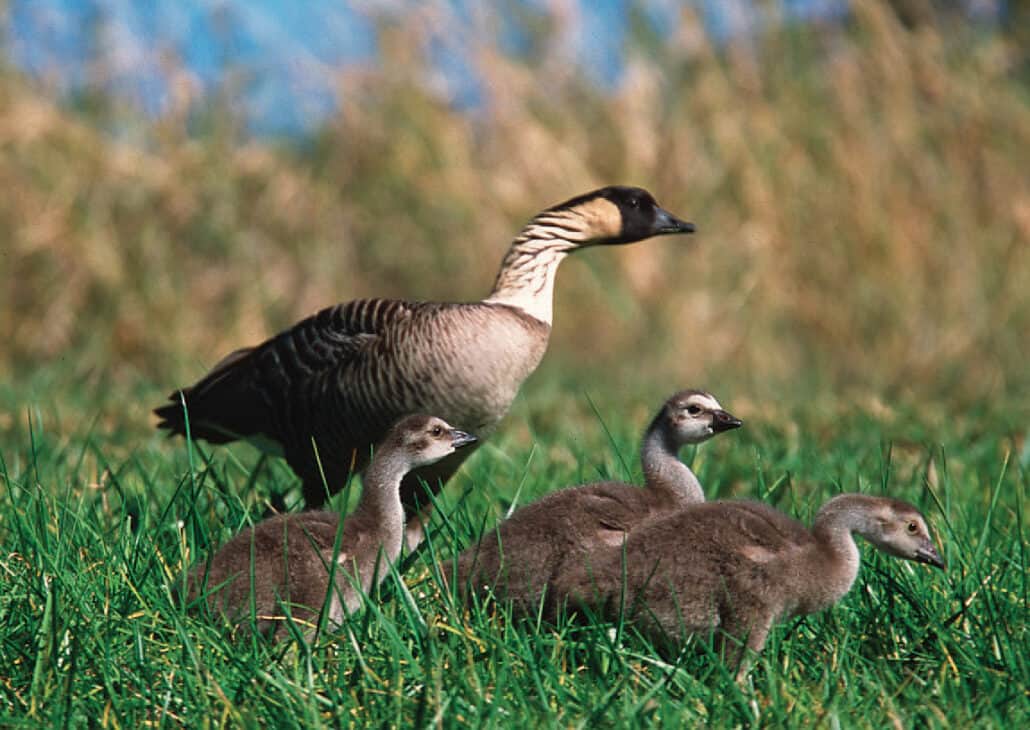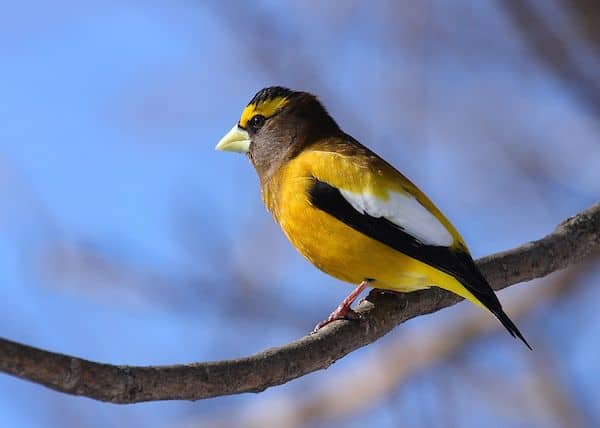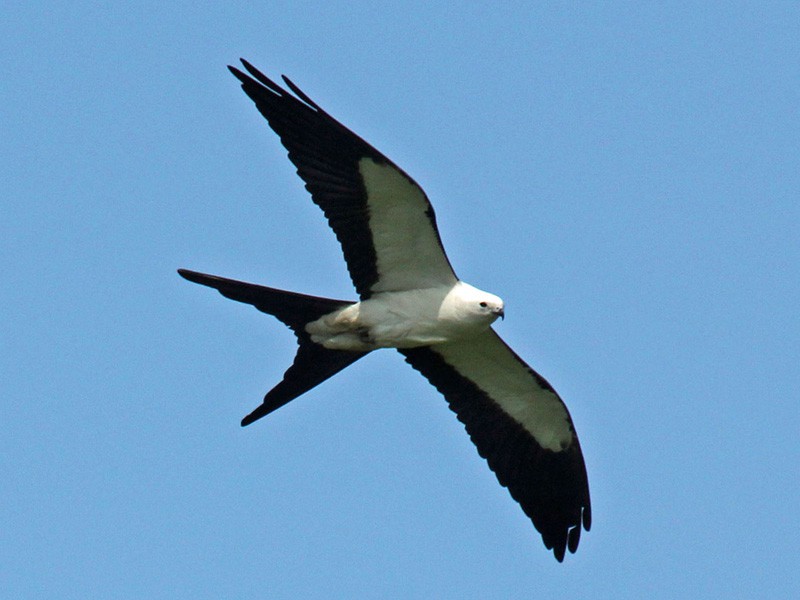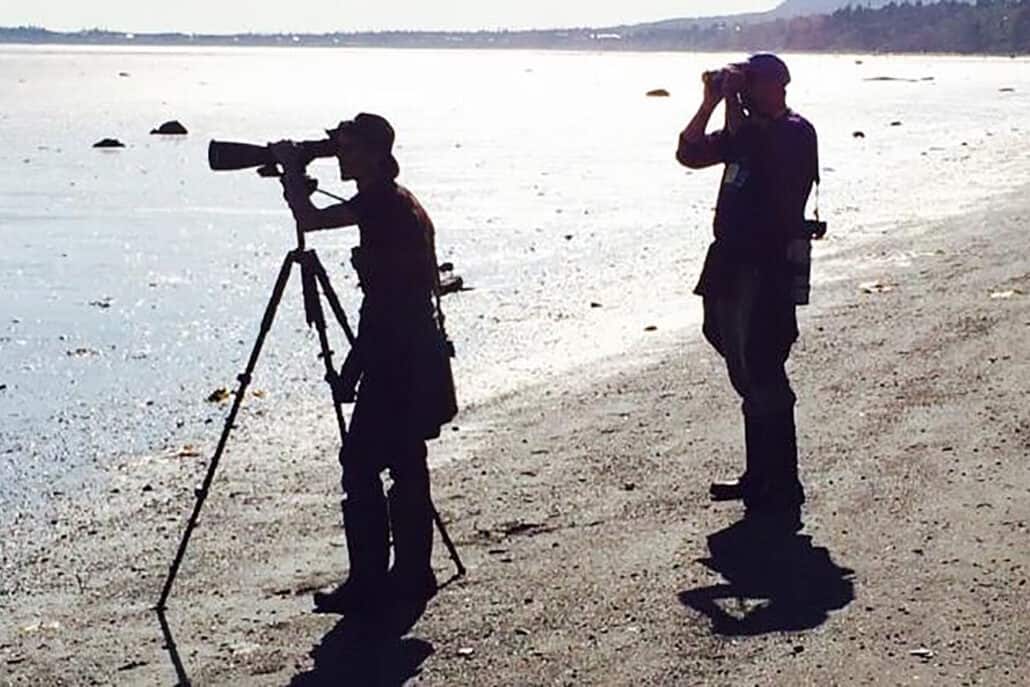Lounging on the lanai my first morning on Kauai, I notice a bright flash of color below our rented condo.
Putting binoculars to eyes, I bring the bird into focus. It’s a beauty, with gray back and wings, white belly and neck collar, and scarlet crested head.
“Helene!” I shout to my sweetheart. “Quick, come look at this bird.”
“Wow,” she agrees. “It’s absolutely gorgeous.”
The species is new and exotic to me, and I assume it’s native to the island of Kauai. That only shows how little I know about the Hawaiian Islands’ bird populations and their sad history since humans entered the picture here. (It’s true that I visited Kauai once before, but that earlier stay was two decades ago, years before I became an avid bird watcher, and I barely noticed the island’s avian residents then.)
Paging through my guidebook to Hawaii’s birds, I quickly learn that the bird flashing around the condo’s gardens and trees—most of them also “aliens” to the island—is indeed a tropical species. But as its name suggests, the red-crested or Brazilian cardinal is native to South America.
Like so many of this island chain’s contemporary species, this cardinal was brought here by humans. Released on Oahu around 1930, the red-crested cardinal now thrives on five of Hawaii’s main islands. It keeps company with the likes of zebra doves, house sparrows, and common mynas, other invasives that have settled into Kauai’s urban areas.
Sparrows, cardinals, doves, finches, and mynas are among Hawaii’s most high-profile birds, largely because they adapt so well to the human environment. Not so the majority of indigenous species, particularly passerines. Native songbirds tend to be more wary and secretive, inhabiting the island’s much-diminished forests.
Because I have a special passion for songbirds, and because Helene has come to know the island well during her many visits, she takes me hiking in Kokee State Park, near Kauai’s famed Waimea Canyon. Following the Alakai Swamp Trail, we go deep into native woodlands that are largely untouched by human development. This place, Helene knows, is a passerine stronghold.
During the five-hour hike, we hear abundant bird song ranging from sweet warbled melodies to buzzing trills, and we see frequent flashes of color high in the canopy. But it’s hard to get good looks at the birds, which mostly stay in heavy cover and seem constantly on the move. Perhaps after centuries of being harmed by our kind, they instinctively “know” it’s not safe to linger around humans.

In the end, we identify a handful of species. The most common—or at least the easiest to see—is a crimson delight called the ‘apapane, in the Hawaiian honeycreeper family. The bird’s head and body are mostly bright red; the wings, tail, and slender, slightly downcurved bill are black; and its lower abdomen and undertail are white.
Our guidebook tells us that the apapane forages actively in the forest canopy for nectar and insects, and that its song is a complex mix of trills, whistles, buzzes, and chips. So its voice, like the bird itself, is hard to pin down.
We also see several ‘elepaio, monarch flycatchers that is are only slightly larger than the black-capped chickadees and red-breasted nuthatches I see at home in Alaska. These Hawaiian birds are more plain—mostly grayish brown with distinctive white wing bars, rump, and tail-feather tips.
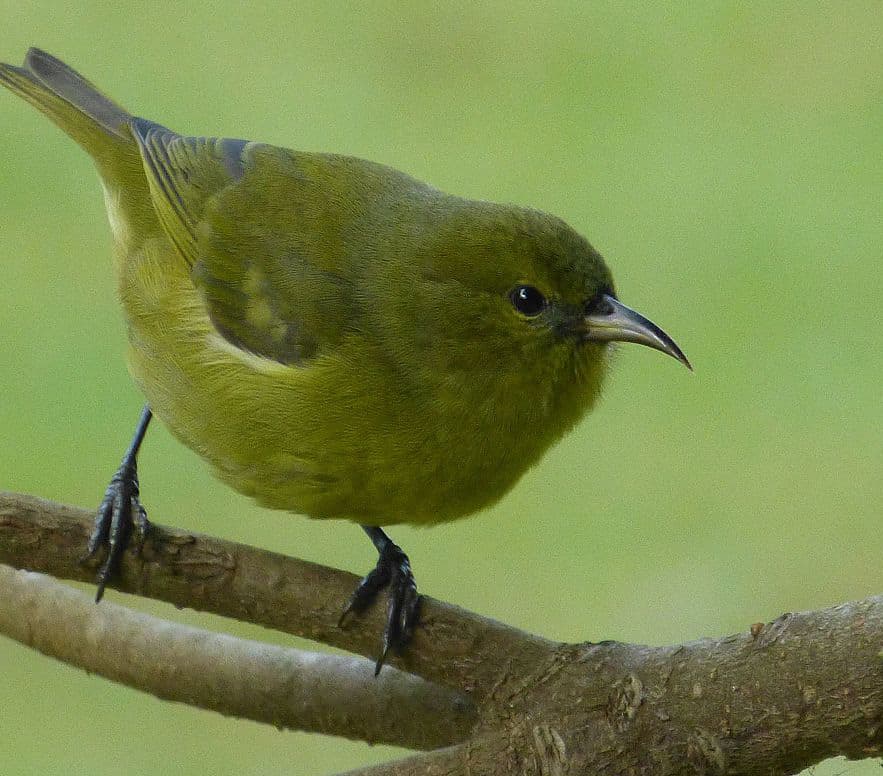
I glimpse enough of another forest bird to conclude I’ve seen an ‘amakihi, a yellowish-green passerine with a decurved bill adapted for gathering nectar from native flowers, many of which are tubular.
Relatively new to birding’s delights and more fascinated by raptors than passerines, Helene is most excited by our sighting of an owl soaring in broad arcs above the forest canopy. Although we see the bird from afar, the owl’s darkish face suggests it is Hawaii’s short-eared owl, or pueo. What confirms its identity is the time of day: We spot the owl in early afternoon, when the pueos, but not barn owls—introduced to the islands in the mid-1900s for rodent control—are likely to be active.
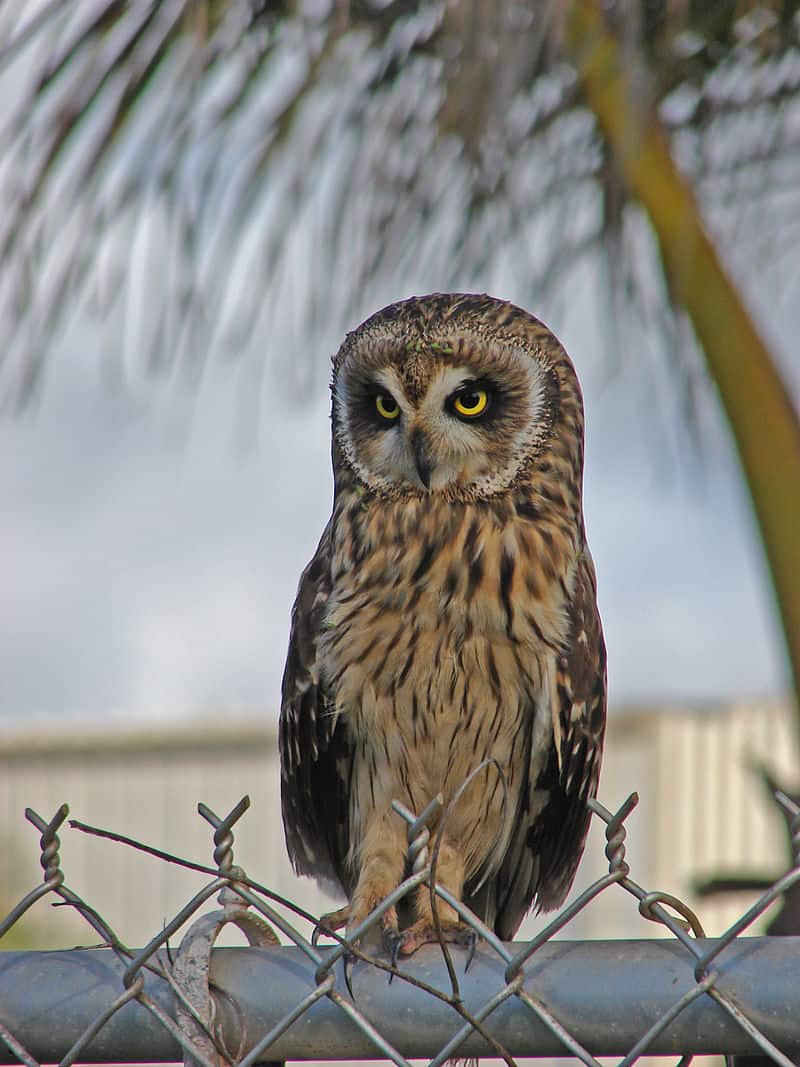
We agree it is something of a coup to see Hawaii’s only owl during our short time on Kauai. Like all the native songbirds we see, the pueo is endemic to Hawaii—that is, the owl evolved here and is found nowhere else in the world. Its presence clearly impressed the chain’s first settlers. According to our guidebook, they worshipped the pueo as a god and considered it a guardian spirit.
During our weeklong stay, Helene and I also visit the Kilauea Point National Wildlife Refuge and its historic lighthouse. Although the attention of most visitors is drawn to the humpback whales that roll, tail-slap, spy hop, and breach in nearby coastal waters, Kilauea Point is raucous with seabirds, particularly the hundreds of red-footed boobies (‘a in Hawaiian) that are nesting in trees and bushes that grow on the area’s volcanic cliffs.
“How could anyone name them ‘boobies’?” Helene wonders. “They’re beautiful birds.”
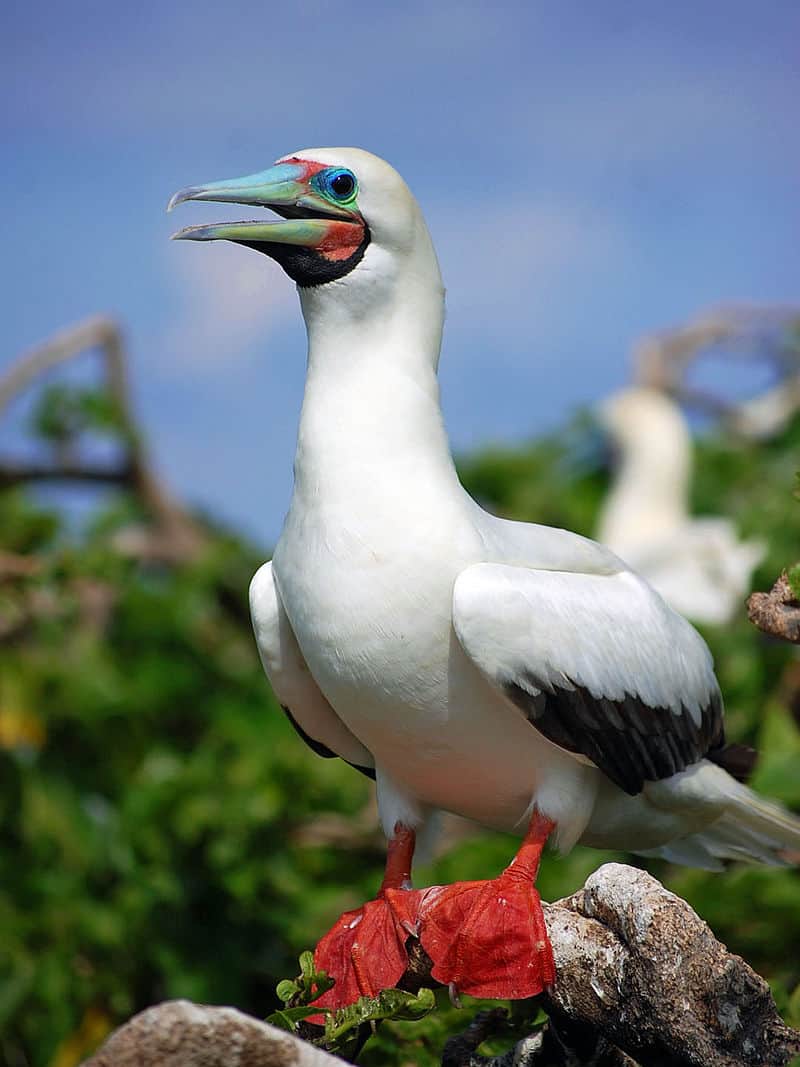
Indeed they are. The booby’s large white body is set off by crimson legs and feet, black-tipped wings, and a long, pale blue bill.
Equally stunning are the other seabirds we see—the red-tailed tropicbirds, or koa’e kea, that scream loudly among themselves and circle each other in mating dances just off the lighthouse viewpoint, their long, red tail feathers streaming behind them. Or the mostly black great frigatebirds, or ‘iwa, with deeply forked tails and wingspans that approach eight feet. Or black-and-white laysan albatrosses, male and female moli facing each other and lifting their heads and bills upward in a mating ritual on the grassy fields atop the cliffs.
Although indigenous to Hawaii, nearly all of Kauai’s seabirds are found elsewhere. None of the species we see, and few of the others, are endangered. The birds that can’t soar elsewhere are the ones in trouble—mostly woodland songbirds, but also some wetland and open-country species, including Hawaii’s state bird, the nene. A medium-sized goose with a black head and nape and handsomely striped brown-and-cream neck, the nene nearly went extinct in the early 1950s but has been established on several islands, including Kauai, where it is now thriving.

Our appreciation for these endemic species—and sadness over their plight—grows during our stay when Helene notices a short piece in the local paper about the “State of the Birds Report” recently released by the U.S. Department of the Interior. Emphasizing the local angle, the newspaper story notes that “Hawaii, more than any place in the country, highlights the challenge that native American birds face.”
More than 70 of Hawaii’s indigenous species have gone extinct since humans first colonized the Hawaiian Islands some 1,700 years ago—as many as the number known to still inhabit the chain. Another 10 endemic species not officially listed as extinct haven’t been seen in years. More than one-third of all U.S. species listed as endangered reside on Hawaii’s islands.
The native birds have been harmed by both loss of habitat and predation by introduced species, from pigs and cats to rats and mongooses (the last, ironically, introduced to control the rat population).
By contrast, some 150 species of birds have been introduced to the islands, and many of those also threaten the natives, by competing for food and nesting sites and transmitting foreign diseases and parasites.
It’s discouraging to be in one of this country’s idyllic paradises and know how much richer these islands were not so very long ago. There is hope that the remaining species will be protected, but it will take a great and sustained conservation effort and substantially more money than the federal government has so far dedicated to Hawaii’s endangered species.
At the end of our island stay, I compile a list of the birds we’ve identified. Sixteen of the 31 species are aliens. And most of the natives are either marine or wetland birds. Only five are endemic passerines.
Many of the invasive passerines are lovely—not only the red-crested cardinal but the northern cardinal, Java sparrow, and chestnut munia, to name a few. Meanwhile, the native beauties stay deep in the forest, hiding and holding on.

